
Tokyo Awaits: Culture, Cuisine, and Cutting-Edge Cool.
Best Places to Visit in Tokyo
Tokyo, the bustling capital of Japan, is a mesmerizing city that seamlessly merges traditional culture with cutting-edge innovation. As one of the world’s most vibrant metropolises, Tokyo offers a treasure trove of experiences for travelers, from historic temples to futuristic skyscrapers.
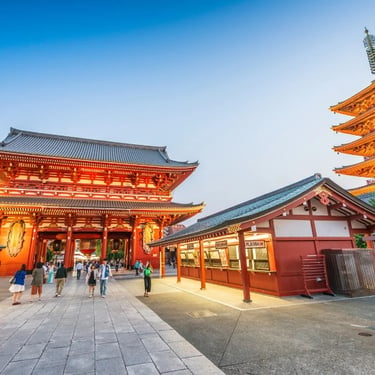
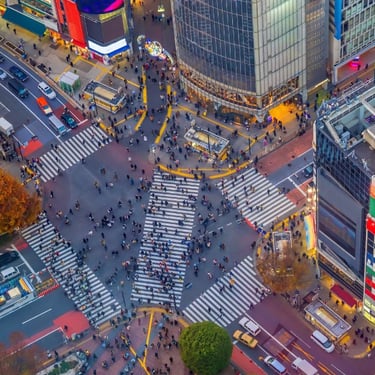
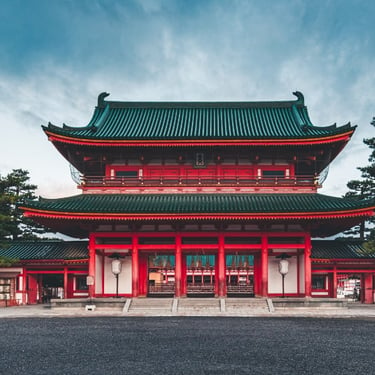
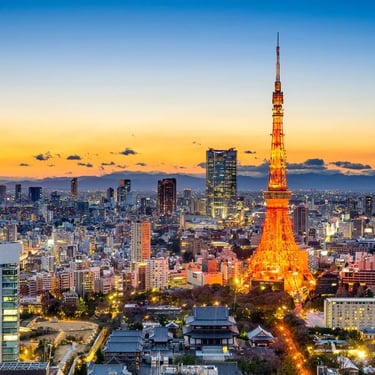
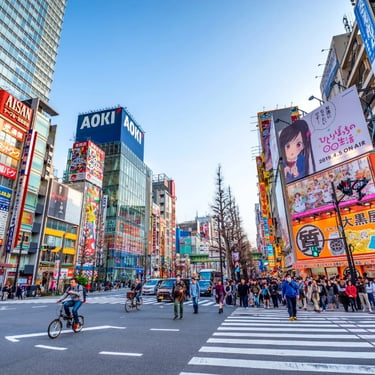
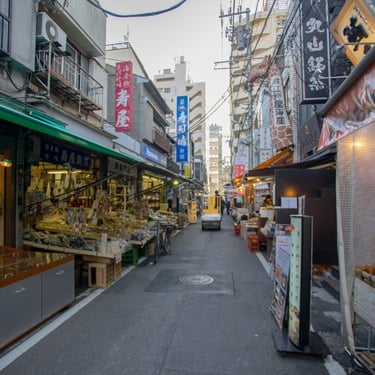
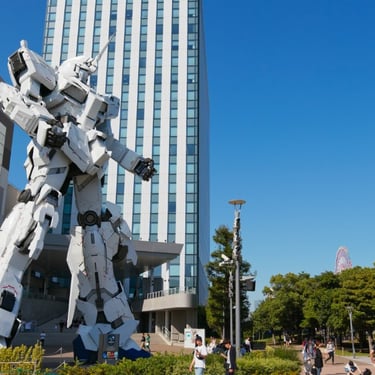
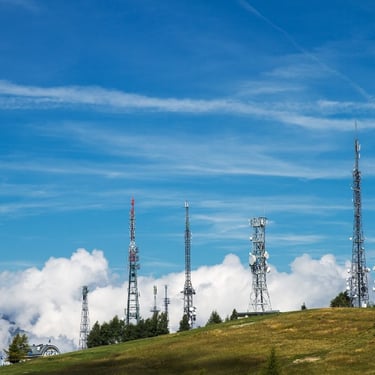
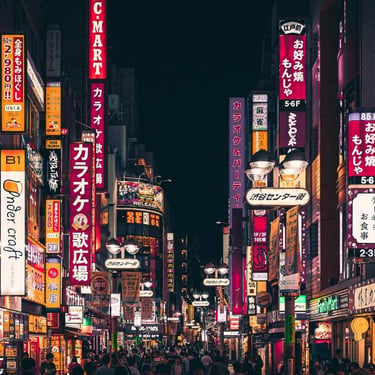
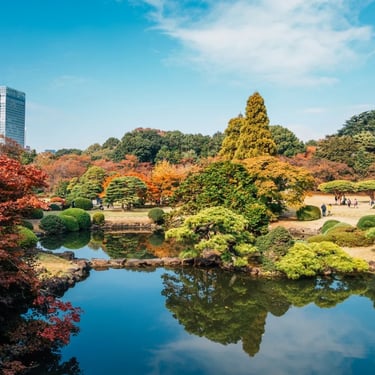
Disclosure: Some of the links below are affiliate links. This means that, at no extra cost to you, I may earn a small commission if you make a booking through them. These commissions help me keep the content fresh, host events, craft new guides and stories, and support a small team behind this site. I only recommend companies I personally use and love—because they’ve genuinely made my travels better.
Best 10 Must-See Attractions in Tokyo
1. Shinjuku Gyoen National Garden


Why It’s Special: Shinjuku Gyoen National Garden is an expansive park located right in the center of Japan’s high energy city, Tokyo, and showcases traditional Japanese, French, and English gardening styles. It was once an imperial garden nowadays one can come and appreciate the work done on the territory and its layout. The park offers what nature lovers need most in different seasons, from cherry blossoms in spring to crisp foliage in the autumn and calm waters in the rest of the year.
Must-Do Experiences: Stroll around the Japanese Garden, admire the architecture of French Flowers or have a meal on the grass area of the hearty English Lawn. One can also see exotic tropical plants; for instance, the wonderful plants are found in the greenhouse.
Cultural Immersion: Of course, cherry blossom viewing is another great chance to get even more of the Japanese experience: go hanami.
2. Asakusa and Sensō-ji Temple


Asakusa and Sensō-ji Temple: Tokyo’s Historic Heart
Why It’s Special: Sensō-ji is the oldest temple in Tokyo and is located in Asakusa which is specially known as Tokyo’s historic district. This includes the Kaminarimon with red colored gates, and the famous Nakamise shopping arcade, both of which give any visitor an idea of what to expect in Japan.
Must-Do Experiences: Take a walk through Nakamise-dori – food and souvenir shops imitating the old style are situated there and visit the temple. Poss Kobe, Isshimura, or some cultural picture taking in a kimono, taking a rickshaw ride, or taking a boat cruise on the Sumida River nearby.
Scenic Beauty: Standing before the gate of the Sensō-ji temple and seeing the looming pagoda dotted by the cherry blossoms in the beginning of spring is an unforgettable historical image.
3. Shibuya Crossing


Shibuya Crossing: Tokyo’s Iconic Heartbeat
Why It’s Special: But, the most famous intersection is Shibuya Intersection which is also known as the world’s busiest crossing. It remains a procession where hundreds cross in formation of one kind or the other coming from all sides, an organized form of chaos.
Must-Do Experiences: Have fun observation and visit Shibuya Sky or Starbucks which overlooks the packed site where the crowd rushes again and again. Take a picture with the statue or Hachiko which represents loyalty or furry. After that, why not take a walk around the origin of the district to find the shops, arcades, and restaurants of Shibuya?
Scenic Beauty: Especially during the night, crossing lights up numerous neon billboards and great dazzling lights making it more cinematic environment of Tokyo.
4. Meiji Shrine


Meiji Shrine: Tokyo’s Spiritual Heart
Why It’s Special: Located in a beautiful shrine in Tokyo, Meiji Shrine is a Shinto shrine dedicated to Emperor Meiji and Empress Shoken. A truly contrasting place as it provides calmness and traditions to the clashing and busy spirit of a modern city.
Must-Do Experiences: Tour Nardenomari-Torii and stroll through the O-Idono-Mae, Imperies house Shinto shrine and experience Shinto ceremonies in action. Do not overlook; the Meiji shrine treasure house, it boasts relics belonging to the imperial household.
Scenic Beauty: Located among tall trees and calm trails, the beauty of nature enhances the charm of the shrine and thus makes it as a much-coveted combination of art and nature.
5. Tokyo Tower


Tokyo Tower: A Beacon of Architecture of Style and Design
Why It’s Special: Tokyo Tower is the image of Japan after the post-war reconstruction and technological development. It was constructed back in 1958 and may be considered one of the examples of the Japanese desire for development and everything contemporary.
Must-Do Experiences: Tourists are free to move to the observation floors which offer excellent views of Tokyo and on a clear day Mount Fuji. Visit the foot museums, shopping malls, restaurants, and art galleries of the FootTown which is amazingly brilliant.
Scenic Beauty: During the night, lights decorating this tower sparkle, and the building casts a rather enchanting sparkle on the skyline. That is why the opportunity to look at the beautiful and lively city below and the tower above was a fascinating view.
6. Akihabara


Akihabara: Exploring and Shopping for Japan’s Tech and Pop Culture in Tokyo
Why It’s Special: Subsequently, it is time to name Akihabara as the true heart of Tokyo’s focus on technology and pop culture, associated closely with anime, manga, and electronics. It draws international customers interested in modern technological advancement, as well as connoisseurs of unconventional souvenirs.
Must-Do Experiences: Walk through the gigantic electronics stores and eat in anime-themed cafés or explore legendary arcades. No kick can start a real tour of Akihabara without visiting many more shops that sell anime, manga, and gaming products.
Scenic Beauty: Neon lights and crowded streets make the area recognizable, however the bright colors and eye-popping futuristic-looking buildings give Akihabara a modern appearance rather fitting for a futuristic capital of technology and innovation that stands in stark contrast with the traditional places of interest in Tokyo.
7. Tsukiji Outer Market


Tsukiji Outer Market: Tokyo's Culinary Gem
Why It’s Special: It attracts millions of tourists due to its well-developed outer wholesale market and tasty and fresh food products. This is the beating food hub of Tokyo and has a true street vending atmosphere with stalls’ baskets containing local specials.
Must-Do Experiences: Try new and tasty sushi, buy ready seafood that was grilled right on the spot, the street food of the stalls that offer various shiny kitchen utensils, and different kinds of items made by hand. Time spent without a visit to this market is not considered complete without sampling famous foods of Japan such as the tamago and seafood donburi.
Scenic Beauty: The scene, distinct from the bright and frequently vibrant merchants and customers, helps to present a more raw set of environments than might be found in Tokyo.
8. Odaiba


Odaiba: Tokyo’s Futuristic Playground
Why It’s Special: Odaiba is an artificial island that has incorporated the basics of technology, fun, shopping, and relaxing. A walk around this City and the attractions such as Tokyo’s Rainbow Bridge and the massive Unicorn Gundam statue are sure bait to any visitor.
Must-Do Experiences: Visit teamLab Borderless – a mind-boggling world of digital art and discover a shopping destination at DiverCity Tokyo Plaza. It would be a pity not to visit the Odaiba Seaside Park, as well as the Miraikan Museum.
Scenic Beauty: Odaiba with its waterfront, which has the Rainbow Bridge and the Tokyo Tower view, is a calm area and a paradise for sights, mainly in the vivid and beautiful twilight.
9. Roppongi Hills and Mori Tower


Roppongi Hills: Tokyo’s Urban Marvel
Why It’s Special: Roppongi Hills is a fine architectural structure and an active center of art, culture, and nightlife. The complex culminating in the spectacular Mori Tower neglects nothing that characterizes Tokyo as a symbol of the modern city embracing art and design as well as innovation. The area is perfect in every way due to its provision for the combination of commercial, residential, and recreational facilities hence creating a complete experience of the urban environment.
Must-Do Experiences: Go to the 54th floor of the Mori Tower for a view of some of the city’s tallest buildings, including the Fuji on a clear day. It is also recommended to visit the Mori Art Museum, which specializes in contemporary art. The bustling atmosphere of Roppongi and the plentiful green scenery make the place even more attractive.
Scenic Beauty: The density seen from the observation deck of Mori Tower is extremely impressive, as well as the lights of the city accompanied by distant mountains make a very impressive sight, especially during twilight.
10. Harajuku and Takeshita Street


Harajuku and Takeshita Street: Tokyo’s Trendy Heart
Why It’s Special: Harajuku is Tokyo’s fashionland place, which offers modern and progressive clothing sense with customary Tokyo flavour. Takeshita Street which is the main shopping area of Harajuku is a narrow pedestrianized street with clothes shops, cafes, confectioners, and others that reflect alternative styles of youth fashion.
Must-Do Experiences: Takeshita Street offers the newest trends in apparel and accessory fashion from rebellious to quirky to kawaii. Take a stroll over to the Meiji Shrine to admire some zen after the rigmarole of walking through the cool neon streets. Be sure to sample well-known treats such as pancakes and colorful cotton candy.
Scenic Beauty: Contrary to its shady reputation associated with the harassment and Tram-Posing phenomenon, Walker’s favorite Neomonogatari Head Office is located in Harajuku, and although the area might be a little chaotic at times, greenery around the Meiji Shrine provides a great contrast to the district’s vibe.
Frequently asked questions
General Travel Information
1. Q: What is the best time to visit Tokyo?
A: Spring (March–May) for cherry blossoms and autumn (September–November) for pleasant weather and colorful foliage.
2. Q: Do I need a visa to visit Tokyo, Japan?
A: It depends on your nationality. Many countries have visa-free access for short stays (up to 90 days). Check Japan’s immigration website for your country.
3. Q: Is Tokyo expensive to visit?
A: Tokyo can be pricey, but budget travelers can manage with affordable food, hostels, and public transport. It’s possible to visit Tokyo comfortably on $70–$150/day.
Transportation
4. Q: What’s the best way to get around Tokyo?
A: The subway and train system (like JR Yamanote Line and Tokyo Metro) are clean, punctual, and extensive. Buy an IC card like Suica or Pasmo for convenience.
5. Q: Are taxis expensive in Tokyo?
A: Yes, taxis are expensive and not usually necessary unless it’s late at night or you have luggage. Public transport is the preferred option.
6. Q: How do I get from Narita or Haneda Airport to central Tokyo?
A: From Narita, take the Narita Express (N’EX) or Keisei Skyliner. From Haneda, the Tokyo Monorail or Keikyu Line is quick and cheap.
Accommodation
7. Q: Where should I stay in Tokyo?
A: Popular areas include Shinjuku (vibrant nightlife), Shibuya (youth culture), Asakusa (traditional vibes), and Ginza (luxury shopping). Choose based on interests and budget.
8. Q: Are capsule hotels comfortable and safe?
A: Yes! Capsule hotels are clean, affordable, and safe. They're a unique Japanese experience, especially for solo travelers.
Food & Drink
9. Q: Can I find vegetarian or vegan food in Tokyo?
A: Yes, though not as common as meat-based dishes. Look for dedicated vegan restaurants or use apps like HappyCow.
10. Q: Is street food popular in Tokyo?
A: Not like Southeast Asia, but areas like Asakusa and Ameya-Yokocho offer tasty street snacks like takoyaki, taiyaki, and yakitori.
11. Q: Is tipping expected in Tokyo restaurants?
A: No, tipping is not customary in Japan. Good service is expected and included in the price.
Culture & Etiquette
12. Q: What etiquette should I follow when visiting temples or shrines?
A: Be respectful: bow slightly, purify your hands and mouth at the entrance, and avoid loud talking. No shoes inside temple halls.
13. Q: Is it okay to talk on the phone on public transport?
A: No. Talking on phones is considered rude. Keep your phone on silent and avoid disturbing others.
14. Q: Do people speak English in Tokyo?
A: Some do, especially younger people and in tourist areas. However, learning basic Japanese phrases is appreciated and helpful.
Attractions & Experiences
15. Q: What are must-see attractions in Tokyo?
A: Top sights include Senso-ji Temple, Shibuya Crossing, Meiji Shrine, Tokyo Skytree, Tsukiji Outer Market, and teamLabs Borderless.
16. Q: Is Mount Fuji visible from Tokyo?
A: Yes, on a clear day from high-rise buildings like Tokyo Tower or Tokyo Metropolitan Government Building in Shinjuku.
17. Q: Are there day trips from Tokyo worth doing?
A: Yes! Popular day trips include Nikko, Hakone, Kamakura, and Yokohama.
Technology & Money
18. Q: Can I use credit cards in Tokyo?
A: Yes, especially in hotels, department stores, and restaurants. But carry cash for small eateries and street vendors. ATMs at 7-Eleven accept foreign cards.
19. Q: Is free Wi-Fi available in Tokyo?
A: Some public areas, cafes, and train stations offer free Wi-Fi, but it's inconsistent. Renting a pocket Wi-Fi or SIM card is recommended.
20. Q: What’s the electric voltage in Tokyo?
A: Japan uses 100V with Type A plugs (same as North America). Check device compatibility or bring a voltage converter.
Nightlife in Tokyo
Tokyo Nightlife Neighborhoods Map & Highlights
Shinjuku
Golden Gai: Tiny bars, each with unique themes, perfect for bar-hopping and local vibes.
Omoide Yokocho: Nostalgic alley of tiny eateries and sake spots.
Robot Restaurant: Over-the-top techno robot show (great for a wild experience).
Roppongi
Muse: Popular club with international DJs.
Bar Quest: Chill spot with craft cocktails.
Jumanji 55: Lively, late-night bar with a fun crowd.
Shibuya
Nonbei Yokocho: Tiny, intimate bars with old-school charm.
Womb: An Iconic nightclub known for electronic music.
Contact: Underground club with a cutting-edge vibe.
Ginza
Bar High Five: Award-winning cocktail bar with masterful mixology.
Jazz Spot Intro: Cozy jazz lounge for live music lovers.
Ebisu
Ebisu Yokocho: Casual alleyway full of izakayas and craft beer pubs.
Trunk Bar: Stylish cocktail spot with a relaxed atmosphere.
Cheap Flight Booking
Skyscanner is a popular online platform that simplifies finding cheap flights for travelers. Acting as a search engine, it compares fares from airlines and travel agencies to deliver the best deals. Its user-friendly interface allows filtering by price, duration, stops, and more, ensuring customized results. The "Whole Month" feature highlights the cheapest travel dates, making it ideal for flexible plans. Skyscanner’s mobile app is equally robust, offering real-time price alerts and seamless booking options. Additionally, it supports searches for hotels and car rentals, making it a comprehensive travel tool. Trusted worldwide, Skyscanner is a go-to for budget-conscious travelers.
Best Time to Visit Tokyo: Seasons and Highlights
Spring (March to May):
Spring is also a wonderful season in Tokyo because cherry blossoms or sakura usually bloom in mid-March to early April. Ueno Park, Shinjuku Gyoen, and the Meguro River are some of the most visited places within Japan that have turned into a pink blossom paradise. Due to the favorable climate, the outside tourist attractions are ideal to visit at this time.
Autumn (September to November):
Also, the weather is relatively pleasant in this season as summer heat is over and cold winter temperature has not yet arrived, so this season is really enjoyable and beautiful like spring when many parks and gardens of Tokyo turn into beautiful red, orange, and yellow. It is best for viewing and for hiking around other locations nearby, such as Mount Takao.
Winter (December to February):
Tokyo, which is in eastern Japan, has winters cool and dry, though the cities are not crowded. Tourism attractions include festive lights, onsen hot springs, and sometimes, a good view of Mount Fuji if the sun comes out.
Summer (June to August):
Summer is hot and there is high humidity; however, there are quiet festivals such as the Sumida River Fireworks, and Obon festivities. For station area breezes, walk to Odaiba.
The temperature is relatively low in winter and higher in summer, spring and autumn are therefore considerably the best for tourism.
Best Budget Hotel in Tokyo
Price: From ¥8,000 per night (~€60)
Location: Asakusa, near Senso-ji Temple
Why Stay Here: This stylish boutique hotel boasts clean, modern rooms and exceptional guest reviews. It's ideally situated for exploring Tokyo's historic district, with attractions like Senso-ji Temple and Tokyo Skytree nearby. Amenities include free Wi-Fi, complimentary bicycles, and a rooftop terrace offering city views.
2. Hotel LiVEMAX Shinjuku Kabukicho-Meijidori
Price: From ¥10,000 per night (~€75)
Location: Shinjuku, Kabukicho area
Why Stay Here: In Tokyo's vibrant nightlife district, this hotel offers compact yet comfortable rooms with private bathrooms, air conditioning, and flat-screen TVs. It's within walking distance to attractions like the Samurai Museum and Shinjuku Golden Gai, making it a convenient base for city exploration.
Price: From ¥9,500 per night (~€70)
Location: Akihabara, near Akihabara Station
Why Stay Here: This hotel is perfect for fans of anime and electronics. It is situated in the heart of Akihabara. Guests can enjoy amenities like a public bath (onsen), free late-night ramen, and laundry facilities. The rooms are clean and well-equipped, offering great value for the price.
These hotels provide a blend of affordability, comfort, and convenient locations, making them excellent choices for budget-conscious travelers visiting Tokyo.
Best Budget Hostels in Tokyo
1. Toco Tokyo Heritage Hostel
Price: Dorms from approximately €19 per night
Location: Taito City, near Ueno
Why Stay Here: Housed in a beautifully preserved 1920s wooden building, Toco offers a traditional Japanese ambiance with modern amenities. Guests can relax in the serene garden or mingle in the cozy lounge. Hostelworld
2. Little Japan
Price: Dorms from approximately €21 per night
Location: Taito City, close to Asakusa
Why Stay Here: This hostel features a ground-floor café and bar, fostering interaction between travelers and locals. Its minimalist design and friendly atmosphere make it a favorite among solo travelers. Hostelworld
3. Plat Hostel Keikyu Asakusa Station
Price: Dorms from approximately €18.50 per night
Location: Asakusa, near Tokyo Skytree
Why Stay Here: Offering clean, modern accommodations with easy access to major attractions, this hostel is perfect for those looking to explore Tokyo's cultural sites on a budget. Hostelworld
Each of these hostels provides a unique experience, combining affordability with a chance to immerse yourself in Tokyo's vibrant culture.
Stay Connected in Tokyo with eSIM
Instead, Airalo eSIM provides travelers access to local mobile data and services internationally, without a physical SIM card. Thus, Airalo has eSIM (abbreviated for embedded SIM) for practically every country or region, which is more convenient than physically changing SIM cards during the journey.
